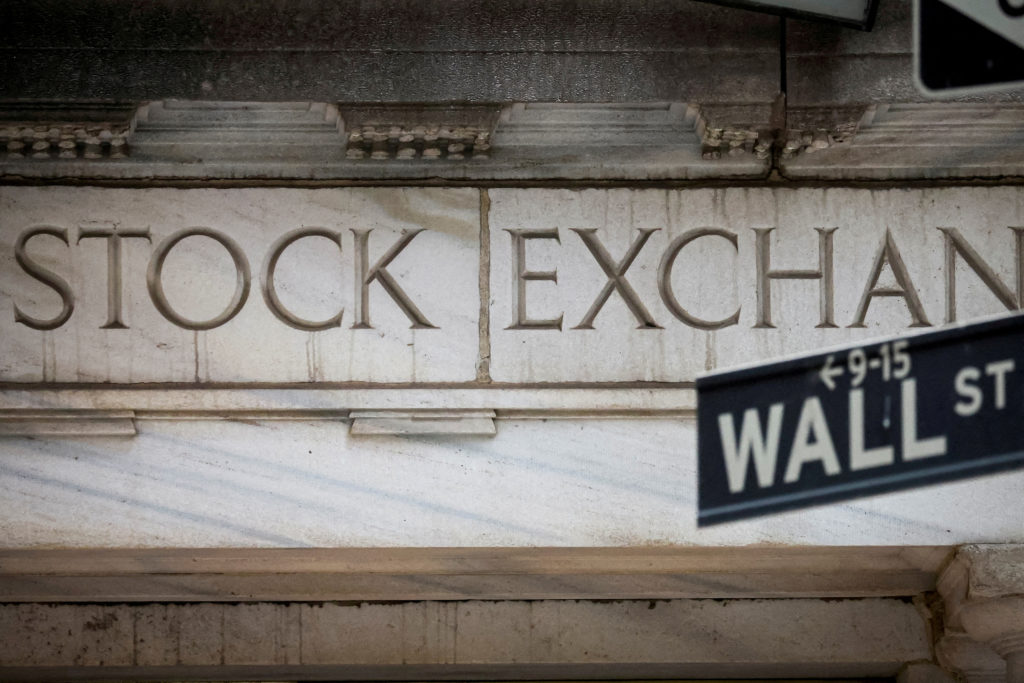Global Markets React to Trump’s Tariff Shock: A Financial Rollercoaster
NEW YORK (AP) — The financial world is experiencing significant volatility this Thursday, following President Donald Trump’s recent tariff announcement. Investors are holding their breath as the U.S. stock market grapples with one of its most severe downturns since the COVID-19 pandemic.
A Dramatic Drop in the U.S. Stock Market
During morning trading, the S&P 500 index plummeted by 4.3%, marking a troubling day that could be reminiscent of the darkest hours of the global economic crisis just a few years ago. The Dow Jones Industrial Average saw a staggering decline of 1,538 points, or 3.6%, while the Nasdaq composite faced an even steeper drop of 5.6%.
For more on how these tariffs are reshaping both the U.S. and global economies, check out this insightful piece: How Trump’s Sweeping New Tariffs Could Shake Up U.S. and Global Economies.
The Ripple Effect of Tariffs: A Global Concern
The fallout from Trump’s announcement has sent shockwaves across financial markets worldwide. Investor fears surrounding the combination of rising inflation and slowing economic growth have created a toxic atmosphere. As a consequence, nearly all asset classes suffered declines. From crude oil prices to Big Tech stocks, and even the U.S. dollar, everything was affected. Remarkably, even gold, which generally serves as a safe haven in turbulent times, succumbed to this bearish sentiment.
The Russell 2000 index, which tracks smaller U.S. companies, tumbled by 6.6%, officially entering a bear market after losing over 20% from its record high. For further insights, watch Trump’s announcement from the event labeled as ‘Liberation Day’ here.
Expectations vs. Reality: The Tariff Surprise
While investors knew that Trump’s tariff announcement was coming, they were blindsided by its severity, described by Mary Ann Bartels, Chief Investment Officer at Sanctuary Wealth, as “the worst-case scenario for tariffs.” Trump unveiled a minimum tariff of 10% on imports, with even higher rates imposed on products from countries like China and the European Union. Analysts at UBS predict that these tariffs could slash U.S. economic growth by 2 percentage points in 2023 and propel inflation close to 5%.
Such forecasted declines in economic health lead some strategists to warn that “it makes one’s rational mind regard the possibility of them sticking as low.”
For further reading on the mechanics of tariffs, explore this article: 5 Things to Know About Tariffs and How They Work.
A Shift in Tariff Strategy
Wall Street had often assumed that Trump’s tariffs were a negotiation tactic rather than a long-term policy. However, this new approach indicates that Trump may aim for something more profound: a commitment to restoring manufacturing jobs to the United States, a process that could unfold over several years.
Experts suggest that if these tariffs become permanent, stock prices might plunge further than the current 11% drop from their all-time high earlier this year. Sean Sun, a portfolio manager at Thornburg Investment Management, warns about potential underreactions from the markets, especially considering the likely repercussions for global consumption and trade.
An uncertain landscape ahead
In this climate, many are speculating if the Federal Reserve will step in to cut interest rates to bolster the economy. In recent months, the Fed had paused its rate adjustments, but with Treasury yields plunging amidst fears over the economic outlook, a move could be imminent. The yield on the 10-year Treasury fell to 4.02%, a significant shift from 4.20% just a day prior.
However, the Fed may find itself constrained; while lowering rates could stimulate the economy, it also risks escalating inflation, particularly as households brace for price hikes due to tariffs.
The Current State of the U.S. Economy
Despite these alarming developments, the U.S. economy is still showing signs of resilience. Recent reports indicate that fewer Americans filed for unemployment benefits last week, defying expectations of a job market slowdown. While the essential growth indicators are somewhat mixed, insights reveal that certain sectors, like restaurants, have improved sales, while others are grappling with supply chain disruptions due to tariffs.
For example, one business reported enhanced restaurant sales, yet another lamented the consequences of tariffs on wood from Canada, stating that the ensuing delays have wreaked havoc on supply chains.
Broader Market Implications
With worries over stagflation looming large, the overall stock market took a considerable hit, with four out of every five S&P 500 companies witnessing declines. Notable casualties included Best Buy, down 15.1%, and United Airlines, which plummeted 13.1% amidst concerns that consumers might cut back on travel during an economic downturn.
International markets mirrored the turmoil unfolding in the U.S. Indexes across Europe experienced steep drops, with France’s CAC 40 falling 3.4% and Germany’s DAX declining by 2.9%. In Asia, Japan’s Nikkei 225 fell by 2.8%, while Hong Kong’s Hang Seng and South Korea’s Kospi also registered losses.
Conclusion: Are We Heading for a Reckoning?
As governments, analysts, and investors navigate this unpredictable landscape, one thing is clear: Trump’s tariff strategy has sent shockwaves through global markets. With fears of economic downturns and uncertain future policies, the coming months will be crucial in shaping the path ahead. As always, it’s vital to stay informed and prepared for the changes that may follow.
For continual coverage and expert analysis, consider supporting PBS News Hour, which provides trustworthy journalism to keep you informed. Donate here.






